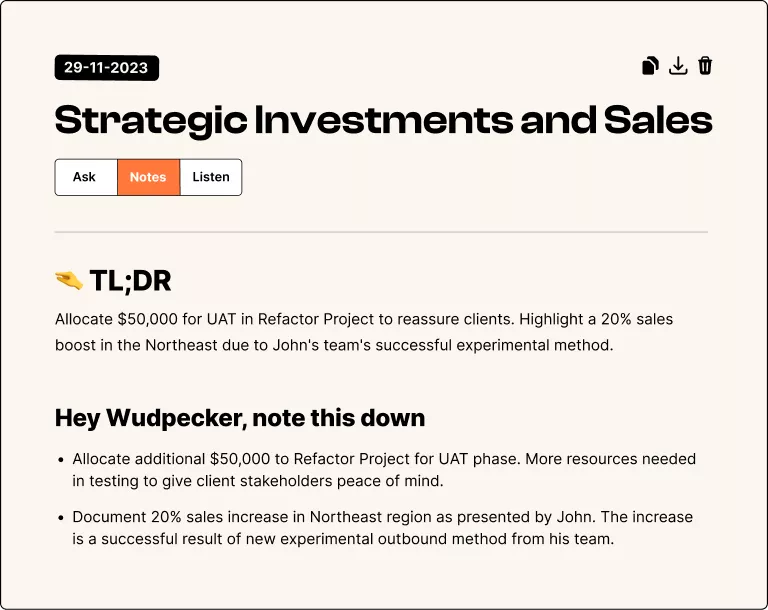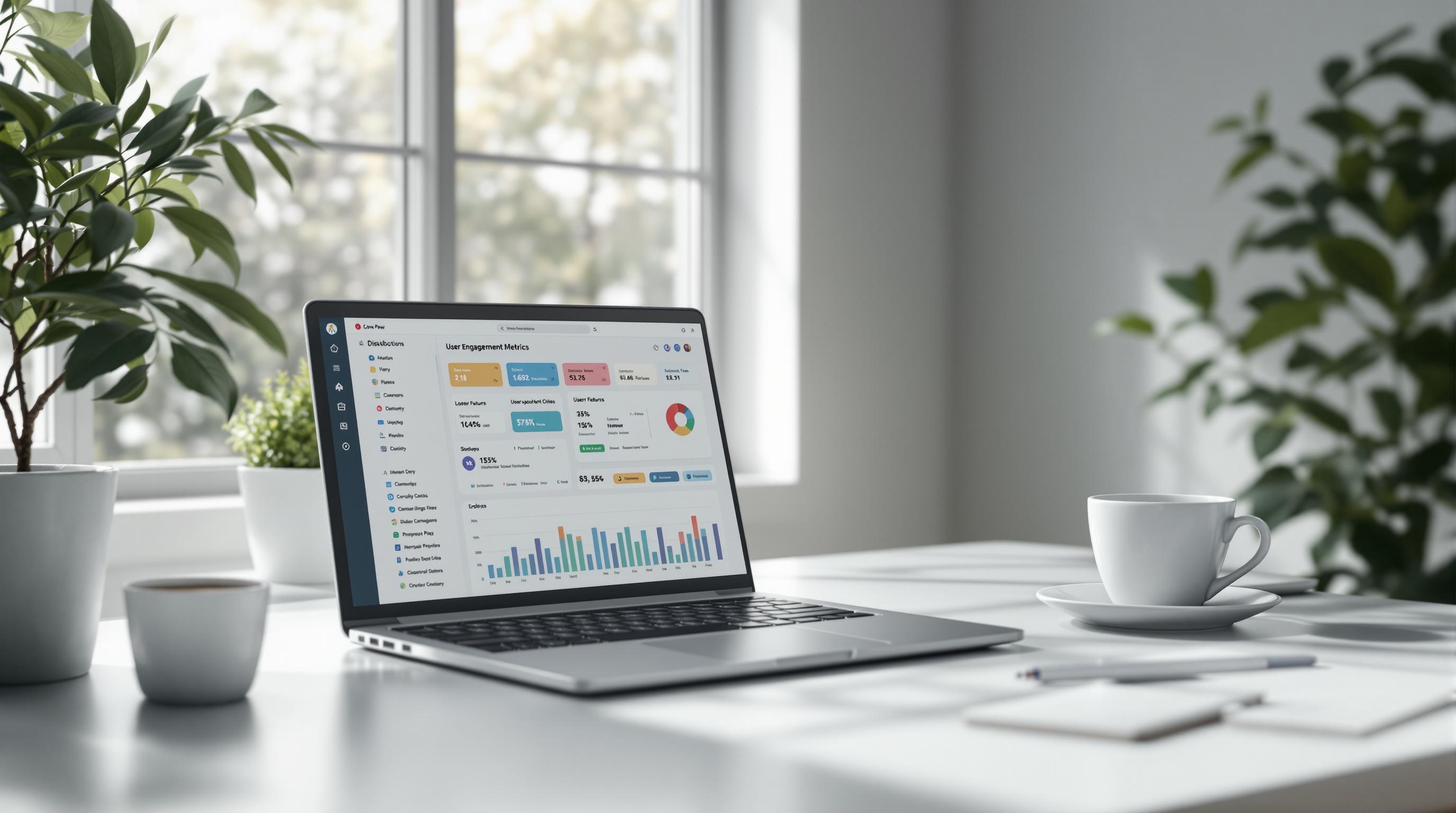Upselling is crucial for SaaS growth, and real-time data helps you do it smarter. By tracking customer behavior as it happens, you can identify when users are ready for an upgrade, improving timing and results. Here's what you need to know:
- Why It Matters: Real-time insights let you act fast when customers hit usage limits or explore advanced features.
- Key Metrics to Watch: Feature adoption, resource utilization, and user engagement patterns signal upsell opportunities.
- Tools to Help: Platforms like Userlens provide dashboards to track activity and trigger alerts for better timing.
- Actionable Steps: Use data to craft personalized offers, set usage-based alerts, and measure success with clear metrics.
Upselling works best when you combine live data with a personal touch. Start tracking the right metrics today to boost revenue and customer satisfaction.
Real-Time Customer Data Basics
What Is Real-Time SaaS Data?
Real-time SaaS data provides instant updates on user activity, tracking live sessions, feature usage, and performance metrics as they happen. Unlike older analytics systems that update daily or weekly, this data flows continuously. This allows customer success teams to quickly identify trends and take action. It's especially useful for spotting opportunities to upsell based on user behavior.
Key Metrics for Upselling
Certain metrics make it easier to identify when customers are ready for an upgrade. Here's a breakdown of the most important ones:
| Data Category | Key Metrics | Upsell Indicators |
|---|---|---|
| Usage Patterns | Feature adoption rate, Daily active users | Reaching usage limits |
| User Behavior | Time spent on advanced features, Navigation paths | Interest in premium features |
| User Engagement | Session frequency, Feature exploration | Increased reliance on the platform |
The Importance of Immediate Data Access
Having real-time access to customer data changes how teams approach upselling. With live insights into usage patterns, customer success managers can time their upgrade discussions more effectively.
Userlens provides dashboards designed for B2B companies, featuring metrics that help teams:
- Identify when customers are exploring advanced features
- Detect patterns that suggest interest in additional services
- Track adoption rates across various user groups within an organization
These insights allow teams to engage customers at just the right moment, setting the stage for more targeted upsell strategies later on.
Finding Upsell Opportunities Through Data
Signs of Customer Readiness
Real-time data can uncover patterns that suggest when customers might be ready for an upgrade. These behavioral clues help customer success teams reach out at the right moment.
Usage Intensity Indicators:
- Consistently approaching plan limits
- Frequent use of advanced features not included in the current plan
- Regular testing of premium features through trial access
Team Expansion Signals:
- An increase in user invitations or new team members joining
- A rise in administrative users or team-wide adoption
Keep an eye on these signs through well-maintained dashboards. Continuous tracking ensures you don’t miss key opportunities.
Using Data Dashboards Effectively
By analyzing customer signals, data dashboards consolidate valuable insights that can drive upsell strategies. Modern tools provide real-time updates on account activity, making it easier to identify upsell potential. For instance, Userlens's activity dots help visualize how teams interact with advanced features.
Key Dashboard Elements to Watch:
| Dashboard Component | What to Track | Action Trigger |
|---|---|---|
| Feature Usage Heatmap | Where premium feature activity is concentrated | Clusters of advanced feature engagement |
| User Growth Trends | Changes in the number of active users over time | A spike in new or active users |
| Resource Utilization | Storage, API calls, or seat usage | Approaching the limits of the current plan |
Tips for Maximizing Dashboard Insights:
- Set up custom alerts for usage thresholds
- Track how different roles adopt advanced features
- Monitor activity during premium trials
While dashboards provide the data, successful upselling requires understanding the customer’s specific needs. Use these insights to craft personalized and timely upgrade offers.
Creating Targeted Upsell Offers
Matching Offers to Usage Data
Use customer activity data to fine-tune your upsell offers. Real-time usage insights help identify the best opportunities to present upgrades based on how customers are already engaging with your product.
Offer Components:
| Usage Pattern | Upsell Focus | Value Proposition |
|---|---|---|
| High API Usage | Enterprise API Package | Higher rate limits and dedicated support |
| Multiple Team Workspaces | Team Collaboration Suite | Better workspace management and admin tools |
| Advanced Feature Testing | Professional Plan Features | Full access to premium tools, plus training |
When to Present Upsell Offers
Timing is everything. Use real-time engagement data to decide when to propose an upsell:
Best Times to Offer Upsells:
- When a customer’s usage hits 85% of their current plan limits
- Right after they complete a major workflow
- During periods of high team activity
- After a successful onboarding experience for new users
Heatmaps showing activity spikes can also help identify when users are most engaged.
Writing Data-Backed Proposals
What to Include in Your Proposal:
1. Current Usage Summary
Highlight key metrics that show how the customer is currently using your product:
- Monthly active users
- Adoption of specific features
- Trends in resource usage
2. Growth Trajectory
Show how their usage is evolving:
- Growth in user numbers
- Exploration of additional features
- Trends in resource consumption
3. ROI Projection
Explain the benefits of upgrading:
- Increased productivity with advanced features
- Savings through bulk pricing options
- Improved collaboration across teams
These data-driven proposals help set clear expectations and pave the way for tracking results in the future.
sbb-itb-6285ddb
Tracking Upsell Results
Key Performance Metrics
To measure how well your upsell efforts are working, focus on these metrics:
| Metric Category | Key Indicator | What to Monitor |
|---|---|---|
| Usage Patterns | Feature Adoption Rate | Percentage of users engaging with premium features |
| User Growth | Company Activity | Daily active users for each customer account |
| Revenue Impact | Upgrade Rate | Percentage of accounts accepting upsell offers |
| Feature Utilization | Resource Usage | Usage levels compared to plan limits |
Tools like Userlens dashboards can help you visualize these metrics. Keep an eye on leading indicators (like how often users explore features) and lagging indicators (like conversion rates) to get a full understanding of your performance.
Testing Different Approaches
Experimenting with different strategies can help you find what works best for upselling. Here are three areas to focus on:
-
Segment Testing
Group customers based on factors like behavior, company size, industry, subscription tier, and feature usage. This lets you tailor your approach to each segment. -
Timing Optimization
Use activity heatmaps to identify peak usage times. Measure how response rates change based on usage thresholds and compare conversion rates at different touchpoints. -
Offer Variations
Test upgrades based on features versus capacity, try different pricing tiers, and experiment with communication methods like in-app notifications or emails.
Use the results from these tests to fine-tune your upsell strategy and improve outcomes.
Using Results to Improve
Tracking upsell performance isn't just about measuring success - it’s about using the data to make smarter decisions.
Turn your results into actionable steps:
- Adjust trigger points, messaging, and timing based on real-time activity.
- Build predictive models, automate triggers, and customize upgrade paths.
By combining product usage data with customer feedback, you can create a clear, unified view of what drives successful upsells. Use these insights to refine your offers and boost revenue.
Pro Tip: Blend data from product usage, customer feedback, and user behavior to uncover patterns that lead to higher conversions. This approach helps you zero in on what works and why.
Common Upsell Challenges
Balancing Data with a Personal Touch
Using real-time data can help you time your upsell efforts, but it’s just as important to keep things personal. Here’s how you can combine both:
- Use data smartly: Let data guide when to reach out, but make sure your messages feel personal and tailored.
- Spot usage trends: Identify patterns in how customers use your product, and highlight those in conversations to show value.
- Stay flexible: Allow account managers to step in and adjust automated triggers based on the customer’s unique situation.
Handling this information carefully is key. Strong data security practices play a big role in maintaining trust.
Keeping Customer Data Secure
Protecting customer data is non-negotiable. Here’s a quick look at some key security measures:
| Security Layer | How It’s Done | Why It Matters |
|---|---|---|
| Data Encryption | AES-256 encryption | Safeguards stored data |
| Transfer Security | Mandatory HTTPS | Protects data during transfer |
| Storage Location | EU-based servers | Meets regional compliance |
If you’re working with EU customer data, ensure GDPR compliance. Assign a team to oversee data governance and regularly review how data is handled.
Zeroing In on the Right Metrics
Tracking too many metrics can cause confusion. Instead, focus on the ones that directly impact your upsell performance. Actionable metrics are what drive results.
Pro Tip: Build custom dashboards that spotlight only the metrics your team needs. This keeps everyone focused and avoids drowning in unnecessary data.
Implementing the “Experts Success” Strategy - Upsells & ...
Conclusion
Using real-time customer insights helps teams identify the perfect moment to offer upgrades that align with customer needs. Here are some practical strategies to turn those insights into successful upsell opportunities.
Action Steps for Teams
- Set up a solid data system: Track key product usage metrics thoroughly and make sure your team can easily access real-time dashboards, as discussed earlier in the section on real-time customer data.
- Use trigger-based workflows: Create automated alerts for specific usage milestones or behaviors that suggest a customer is ready for an upgrade.
- Segment your strategy: Tailor your upsell approach based on customer segments and their usage patterns. Here's a quick guide:
| Usage Level | Trigger Point | Suggested Action |
|---|---|---|
| High | 85% resource utilization | Reach out with upgrade options |
| Medium | Rapid feature adoption | Share educational content on advanced features |
| Low | Increased user adoption | Offer a guided tour of premium features |
-
Track and refine: Measure upsell success with metrics like:
- Conversion rates from identified opportunities
- Time taken from trigger to successful upsell
- Revenue growth per upgrade
- Equip your team: Make sure customer success managers have the tools and training to interpret real-time signals and act on them effectively.
Related posts



.svg)



















.svg)
